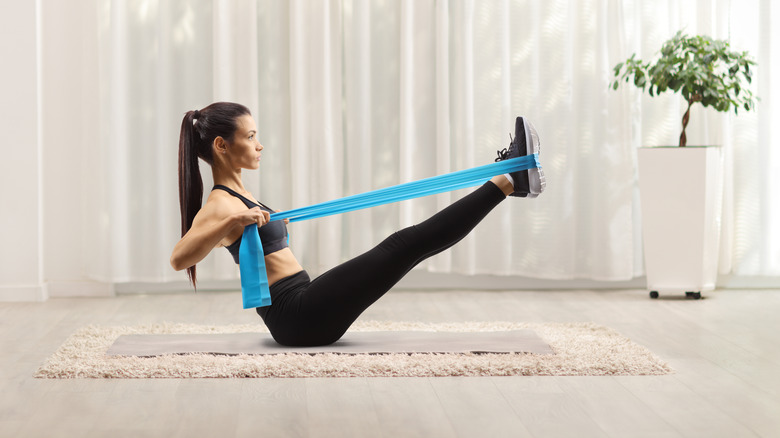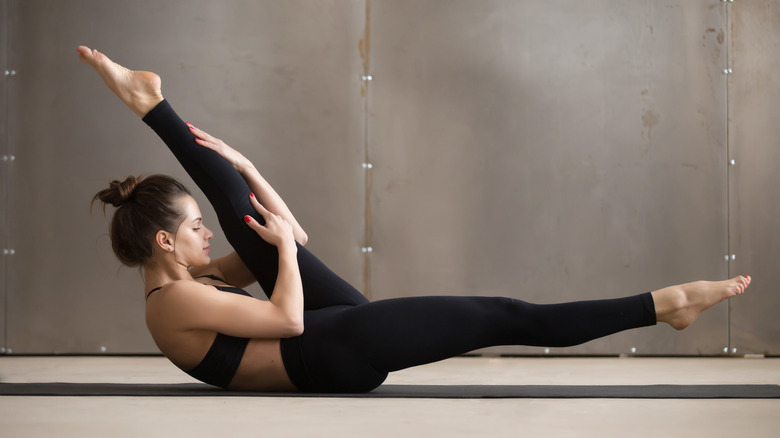The Real Health Benefits Of Active Stretching Explained
There are a few different types of stretching — static stretching, ballistic stretching, active stretching, passive stretching, PNF stretching, and myofascial release stretching. Different ways of stretching can benefit you in different ways.
Active stretching is when you are stretching one muscle and activating another muscle at the same time without using any equipment or accessories. One example is pointing and flexing your feet to stretch and contract the muscles in the front and back of your ankles, feet, and lower legs (via Healthline). The stretched muscle is called the antagonist, and the contracted muscle is called the agonist. You can use active stretching to cool down and stretch at the same time (via Healthline).
Active stretching can improve your flexibility, reduce muscle tension, and decrease muscle strength, according to a 2014 study in the Journal of Physical Therapy Science. The decrease in muscle strength is temporary and is why you should perform active stretching after your workout, not before. You'll need your muscle strength during your workout. Try some of these active stretches after your next workout session.
How to do active stretches
Your workout is over, and you're ready for some active stretching to help you cool down. Hold each stretch for 10 to 15 seconds, and always stop if you feel any pain.
Let's start with a hamstring stretch. Lie on your back with your legs straight out on the floor. You can put your arms out, making a T with your body, or rest them at your sides. Lift your right leg up until you feel the stretch pulling on your hamstring and contract your quad, core, and hip flexors to hold the stretch. Repeat on the left side.
Stretch your biceps with this one. Stand up with arms by your sides, palms facing forward. Lift your right arm out to the side about a foot away from your body. Flex your tricep muscle, and you should feel the stretch in your bicep and shoulder. Repeat on the left side.
Try a chest stretch by standing and stretch your arms out with palms facing forward, making a T. Slowly stretch your arms backward while contracting your back and shoulder muscles and feeling a stretch in your chest and biceps (via Massage and Fitness Magazine and Healthline).
You might want to try other active stretches depending on your workout and fitness goals. Start slow and only hold the stretches for a maximum of 15 seconds. Enjoy improved flexibility, reduced muscle tension, and muscle loss prevention.


